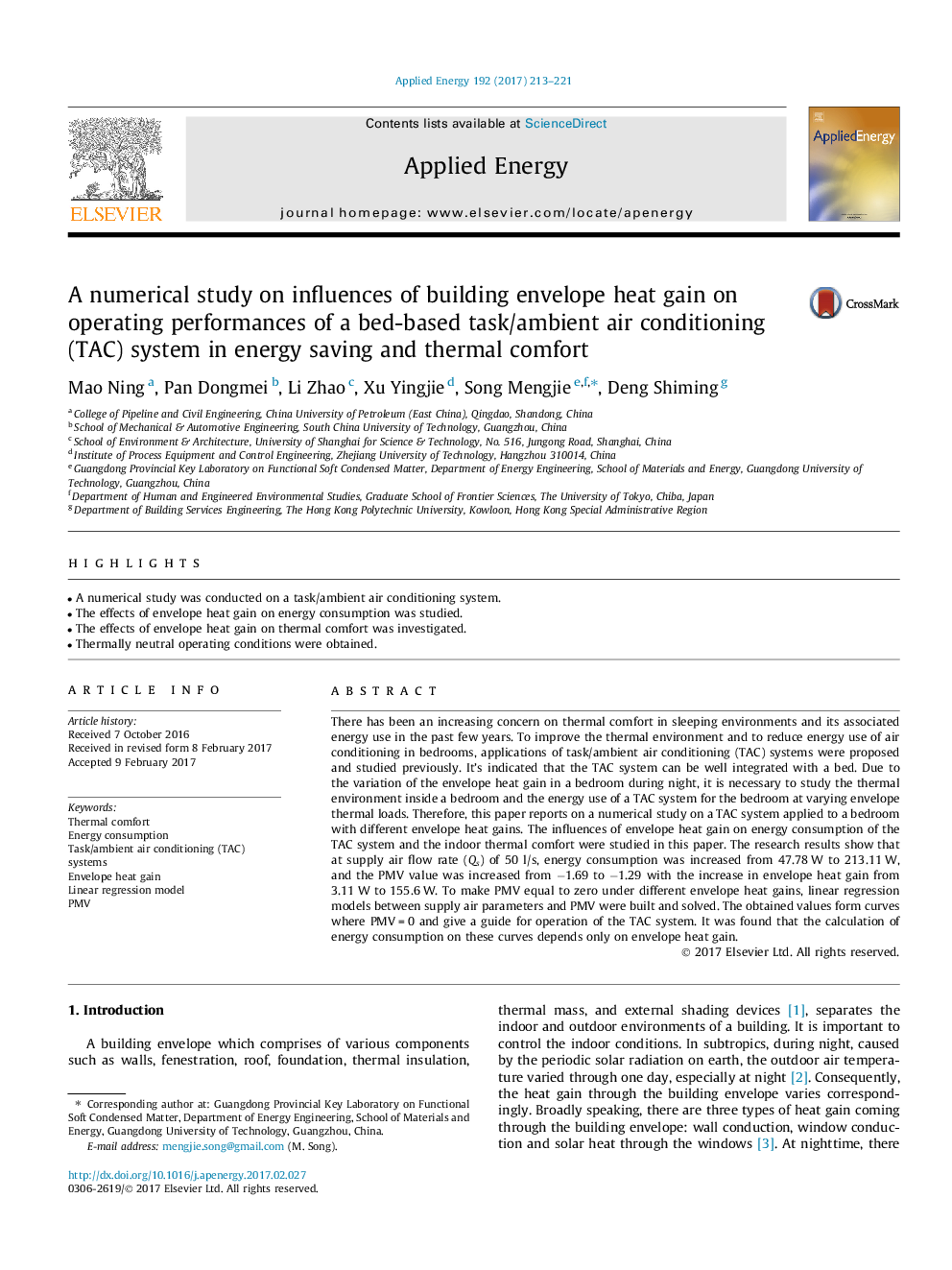| Article ID | Journal | Published Year | Pages | File Type |
|---|---|---|---|---|
| 4916425 | Applied Energy | 2017 | 9 Pages |
Abstract
There has been an increasing concern on thermal comfort in sleeping environments and its associated energy use in the past few years. To improve the thermal environment and to reduce energy use of air conditioning in bedrooms, applications of task/ambient air conditioning (TAC) systems were proposed and studied previously. It's indicated that the TAC system can be well integrated with a bed. Due to the variation of the envelope heat gain in a bedroom during night, it is necessary to study the thermal environment inside a bedroom and the energy use of a TAC system for the bedroom at varying envelope thermal loads. Therefore, this paper reports on a numerical study on a TAC system applied to a bedroom with different envelope heat gains. The influences of envelope heat gain on energy consumption of the TAC system and the indoor thermal comfort were studied in this paper. The research results show that at supply air flow rate (Qs) of 50Â l/s, energy consumption was increased from 47.78Â W to 213.11Â W, and the PMV value was increased from â1.69 to â1.29 with the increase in envelope heat gain from 3.11Â W to 155.6Â W. To make PMV equal to zero under different envelope heat gains, linear regression models between supply air parameters and PMV were built and solved. The obtained values form curves where PMVÂ =Â 0 and give a guide for operation of the TAC system. It was found that the calculation of energy consumption on these curves depends only on envelope heat gain.
Related Topics
Physical Sciences and Engineering
Energy
Energy Engineering and Power Technology
Authors
Mao Ning, Pan Dongmei, Li Zhao, Xu Yingjie, Song Mengjie, Deng Shiming,
